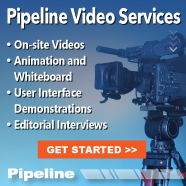A Practical Guide for Embracing Innovation
By: Chantel Cary

The pace of innovation is accelerating. In just the last three years we’ve cycled through the metaverse, been introduced to generative AI, and have now moved on to agentic AI. It can be overwhelming how fast new technologies seem to come and go and hard to determine what’s hype? What’s real? What should be implemented? What has staying power? What can be monetized? These are just some of the common questions telecom leaders are asking as the industry begins to buzz about the latest technology. While the goal is to embrace innovation, it can still be difficult to evaluate where and how to begin. This article can serve as a practical guide to innovation adoption, based on our decades of expertise helping service providers implement emerging technologies.
Define success and failure criteria (chart a course before setting sail)
Before embarking on a voyage—be it by land, by sea, or IT transformation—it’s critical to determine the destination and how to get there. This requires a bit of self-reflection. What is the company’s vision? How might the technology either impact the ways of work or the services provided to the customers?
The answers to these questions will help determine the direction in which the ship will be steered. Once the general direction is decided, a destination can then be set. Defining an objective before adopting a new technology is akin to setting a destination in a GPS; there may be many ways to get there, but without an end point you never will.
An objective should be SMART—specific, measurable, attainable, relevant, and time-bound. During this stage it is equally important to define failure criteria for a project. Having a vision of what both success and failure look like for the business will help decide when to continue and when to move on from a project.
Start small and look for quick wins
Some service providers may feel intimidated by new technologies, perhaps because they don’t have the necessary expertise in-house, or because they feel compelled to go all in on the technology. Starting small, however, can deliver a lot of value to the business by minimizing risk, validating ideas quickly, and building in-house acumen.
Begin by looking for quick wins—starting with high-impact, low-risk areas of the business as an easy way to dip into the water of an innovation. Success is one step closer to validating questions like, “Is this technology the real deal?” Regardless of the answer, knowledge will be gained on the topic to help make more informed decisions moving forward.
Fail fast
It’s easy to fail, but it can be hard to fail fast. Throughout the years working with service providers, we have come across many failing projects that continued to plod along against better judgement. This is why defining SMART goals and failure criteria is such a critical step in the journey. By setting an objective that is time-bound, there is a built-in failure criterion. If a project has not met the set goal by its target date, it is time to move on. Similarly, because any objective must be measurable, if the project results fall short of this target, it is time to change course.
So, how to fail fast? Start with the quick wins. These low-risk, high-reward projects will make it all the easier to pull the plug when it is time to move on.
Create innovation loops
The other value of quick wins is that they are validating; they can provide the courage to keep going. Success also informs future projects, bringing into clearer vision other applications of the technology and new challenges it can solve. At a certain point,



















